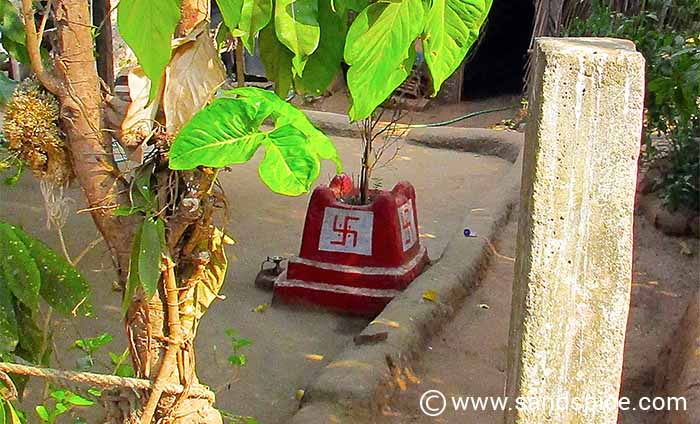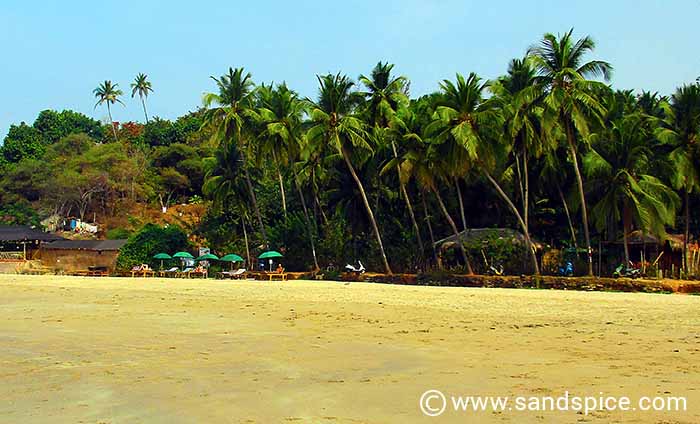
INDIA 🥴 I’ll Never Do It Again
‘INDIA – I’ll Never Do It Again…’ I first came across this expression while chatting with a fellow traveler at a beach cafe in Agonda, South Goa. She pointed out a table on the beach with this inscription carved artistically into the wood.
It sums up the conflicting emotions felt by many travelers after an extended trip around the subcontinent. A combination of frustration, fatigue, irritation, sensory-overload and delhi-belly. I’ve experienced the feeling more than once. But somehow, after a break of several years, it always seemed like a good idea to return to India.
What is it that initially makes us swear never to return, and later draws us back again for more of the same?

INDIA – I’ll Never Do It Again… until the next time
The Challenges of Travel through India
A trip to India really needs to be an extended one. It can easily take a week just to wind down and acclimatize to the pace of life.
As a foreigner, your arrival for the first time in the center of massive cities like New Delhi or Mumbai is quite a shock to the system. The seeming chaos, frenetic activity and persistent badgering can be quite overwhelming.
Getting Around – Trains, Planes & Automobiles
Because of the huge distances involved, it can be tempting to book a few internal flights to pack some extra destinations into your schedule. These flights can be almost as cheap as travelling by AC-class trains, but this isn’t the best way to really experience the country.
It is true that travel by train, bus and rickshaw will eat up much of your time on a trip through India. As uncomfortable and frustrating as this often is, it is also where you’ll likely have your most memorable encounters. Rickshaws are cheap and fun, if occasionally a little hair-raising… and travel by Indian Railways Sleeper Class is a rite of passage that shouldn’t be under-estimated 🙄
Hawkers
With hawkers trying to sell you tat almost everywhere you go, you’ll spend a lot of time politely declining their persistent efforts… that is, you’ll be polite for about the first week (your acclimatization period).
After that, your smile will progressively slip and your patience will dissolve. You might even develop the blank, unfocused 1,000-yard stare as you become emotionally detached from the hassle around you 😐 .
Perfecting a look of dissociation (similar to a trauma victim) is quite an effective way of dealing with the most annoying hawkers.
…You just need to know how to turn it off afterwards…
We found the hawkers to be particularly persistent in Kovalam.

Kovalam beach at nightfall
Poverty & Hygiene
Together with Vietnam, North Korea and Mongolia, India rates as one of the poorest countries in Asia: Way below places such as Indonesia, Sri Lanka or Malaysia.
In some areas, the poverty can seem shocking to Western eyes – particularly considering India represents the 3rd largest economy in the world. Some areas are still plagued by medieval diseases such as leprosy, and state care for the poor and sick is minimal.
If you are a little precious about hygiene, then India may not be the place for you. Tummy bugs from eating are not uncommon, although actual food poisoning is unlikely.
A very distinctive impression of India is the ubiquitous smell of refuse – A smell which I’ve come to associate with the country. Even in Mumbai, there’s a persistent unpleasant smell all around the Marine Drive Promenade.
Hotels & Guesthouses
Following from the previous section on hygiene, you really need to choose your accommodation carefully. There are plenty of really terrible guesthouse choices you need to avoid, and you don’t always get what you think you’re paying for.
Booking in advance online can help, but even choosing mid-range accommodation with plenty of good reviews won’t necessarily guarantee a positive experience.
If you have the time (and the inclination) it is often better to wing it, and book your lodgings as you travel. At least this way you can really see what you’re getting before forking out your dosh. You can also negotiate down the price, which is anyway more or less expected.

INDIA – I’ll Never Do It Again – Beach huts at Palolem
Our first hotel in Kerala was unclean and unloved by the staff of young men in charge. They were more interested in playing cricket outside the reception than actually tidying the place up.
But this wasn’t the worst by far. Our hotel in Fort Kochi was so bad we chose to leave after the first night. Amongst other problems our room was infested with cockroaches the size of mice.
We found good places to stay in Varkala, Goa and Mumbai – this despite the fact that the Secret Garden in Agonda had already rented out our pre-booked reservation to somebody else.

INDIA – I’ll Never Do It Again – Victorian architecture in Mumbai
The Rewards of Travel through India
But enough of the minus points: Why is it that you really should visit India?
Beaches & Swimming
The beaches of India’s south-west coast are top-class. Huge expanses of virgin sand stretching forever into the distance. Added to this, the sea for the most part is warm and calm – ideal for swimming. There aren’t many destinations in the world that offer such a perfect combination.
The best beaches we found were in South Goa, but other locations such as Varkala and Kovalam don’t lag far behind.

INDIA – I’ll Never Do It Again – Idyllic beaches
It’s not surprising that India was chosen as the setting for a host of international films. These include Octopussy, Slumdog Millionaire, The Bourne Supremacy, Life of Pi and Mission Impossible 4.
Of course, India also created Bollywood – the biggest film industry in the world.
Food & Drink
For us, travel means exotic food – and in this department India delivers – in aces!
Whether you visit a high-end restaurant or a simple beach bar, the local food is diverse and simply delicious (… though the beach bar is likely to be the better choice).

INDIA – I’ll Never Do It Again – But you know you’ll be back for more…
With spicy curries, dhals, paneers, tandoories, chapaties, parathas, naans and condiments – often accompanied by freshly-caught fish and local beer – this is reason enough to spend time in India.

Swastika – An important Hindu symbol
The swastika is an important Hindu symbol, commonly used before entrances of homes or temples, signify good fortune, luck or well-being. The reverence for this symbol in Asian cultures, in contrast to the stigma in the West, can lead to misinterpretations and misunderstandings.
Our 31-day India Tour – What did it all cost?
Travelling in from Rome, our 31-day journey through India started and ended in Mumbai. From there we took our open-jaw Turkish Airlines flight back to Europe – returning – not to Rome – but instead to Edinburgh.

INDIA – I’ll Never Do It Again – South Goa
We had worked out a detailed budget in advance, but did our travel budget cover our costs?
Our India Round-trip Travel Budget
Before leaving from home, we had worked out a travel plan and budget of €1,794 per person all-inclusive for the 4½-week trip.
Our actual costs (shown in EUR and USD) are listed below. These costs were for 2 people sharing over a period of 31 days.
| Travel Insurance: 2 persons for 31 days | €109 | $123 |
| 4 Ryanair tickets to/from Rome/Edinburgh | €184 | $208 |
| 2 Open-jaw Turkish Airlines tickets: Rome-Mumbai-Edinburgh | €914 | $1,035 |
| 4 Jet Airways tickets: Mumbai to Trivandrum & Goa to Mumbai | €186 | $210 |
| Prepaid hotels & guesthouses | €455 | $515 |
| ATM cash withdrawals (all other costs) | €2,158 | $2,445 |
| €4,006 | $4,536 |
Our total cost per person was therefore €2,003, including accommodation, travel, all food & drink, entertainment & activities, and even a few souvenirs.
In addition to 22 nights in India, this included 2 nights in Rome, 2 nights in Istanbul and 3 nights in Edinburgh.
Okay, so we ran €209 over budget, per person. This was mainly due to some unmissable activities and gastronomic meals in Edinburgh.
We also needed to pay for visas for Turkey & India (2 persons) totaling €136.

Time for a G&T
Including the bonus stopovers, we got a lot of bang for our buck on this trip to India.
See how this compares to our costs for a 4-week road trip through Panama or for a 19-day visit through Indonesia to the fabulous island of Karimunjawa.
I’ll Never Do It Again ?
In conclusion – and returning to the movie theme – ‘Never Say Never Again’ were reportedly the words used by Sean Connery when he agreed to shoot his final reprise of the James Bond role.
Saying ‘Never Again’ to India is a personal decision, but travel isn’t about always staying within your comfort zone.
 Best hotel options in South Goa
Best hotel options in South Goa
If you enjoyed India: I’ll Never Do It Again, check out India West Coast – Kerala to Goa. You may also like:




















2 Comments
EarnestVoige
June 19, 2024at 7:21 amAppreciating the commitment you put into your blog and detailed information you present. It’s nice to come across a blog every once in a while that isn’t the same unwanted rehashed material. Excellent read! I’ve saved your site and I’m including your RSS feeds to my Google account.
Kishore Rao🇮🇳 😷
October 26, 2020at 3:26 amWell much of what you describe is true, particularly for budget travelers, but the same places where you write about bad hotels have some of the best accommodation. India is a land of contrasts.